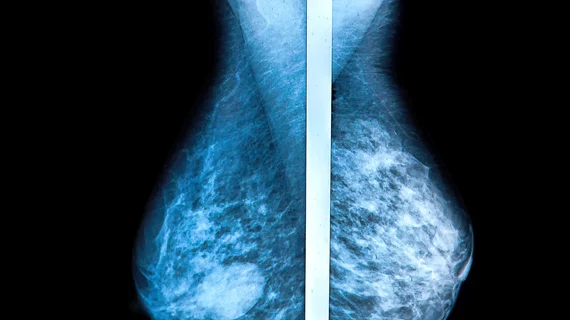Ultrasound after DBT could scrap need for diagnostic mammogram
Researchers from the Mayo Clinic in Rochester, Minnesota found that 98 percent of digital breast tomosynthesis-detected masses sent to ultrasound directly were adequately evaluated without the use of diagnostic mammography, according to research published Nov. 29 in the British Journal of Radiology.
Sadia Choudhery, MD, radiologist at the Mayo Clinic, and colleagues analyzed 212 masses from screening digital breast tomosynthesis scans that were sent either to diagnostic mammography or ultrasound. The researchers noted the size, shape, and margins of the masses as well as breast density, how visible the masses were on ultrasound and the diagnostic assessment and pathology of all masses.
Of the total number of masses detected from digital breast tomosynthesis scans, 102 were worked up with diagnostic mammography initially and 110 were worked up with ultrasound.
However, there was no difference in ultrasound visibility of masses sent to diagnostic mammography first compared to those sent to ultrasound first, according to the researchers.
Four percent of masses sent to mammogram first and two percent of masses sent to ultrasound first were not visualized. The researchers also noted a significant difference in size between masses visualized under ultrasound compared to those that were not.

